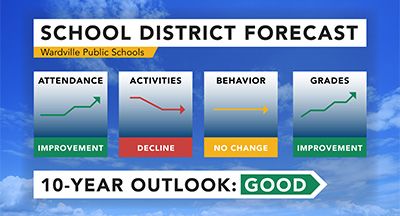
For centuries, leaders have lived behind walls.
Kings and queens have ruled from heavily fortified castles. Business leaders have worked in private offices at the top of skyscrapers, away from the hustle and bustle below.
There may not be physical walls separating you from the ones you lead—but are there figurative ones? Approachable leaders break down those walls, which, in smaller-knit communities like K-12 education, are not only unnecessary but counter-productive.
Let’s take a look at why approachable leadership is important and how you can master it.
How approachable are you, really?
Did you know when filmmakers want to convey a sense of power, they shoot the subjects from below so the audience is looking up at them? These characters are no taller or more fearsome because of the angle. It is merely about perspective—how the audience perceives them.To determine if you are an approachable leader, start by viewing yourself through the lens of the people you lead. You may not be trying to portray yourself as “the powerful one”—but if that’s how you come across, it may be time to rethink your leadership strategies.
What’s the big deal?
Stepping off your pedestal can have dramatic effect on not only your relationship with the people you lead, but also your success as a team. Here’s why:Higher-performing employees: Research shows that employees with open and approachable managers are significantly more engaged. A leader who cares about employees’ careers—and personal lives—will make them feel more valued at work and therefore more likely to want to give back. Plus, if you put people at ease, they’ll be more likely to think better in your presence.
Information advantage: Simply put, your employees will open up to you. This is true whether it’s about a new idea to improve a process or a hardship they’re facing at home that explains why they’ve seemed distracted lately.
Positive culture: Strict hierarchies separate. Breaking down walls creates a sense of trust, mutual respect, and togetherness that just might transform your work circle from a team into a family.
Loyalty: Turnover in K-12 schools is a real issue. If you’re a more open and accessible leader, employees will be more likely to develop a sense of loyalty to you and stick around longer.
How do you become an approachable leader?
At the heart of being an approachable leader are two virtues: humility and empathy. They can be manifested in a variety of ways. Here are some steps you can take to become more approachable:1) Communicate early and often.
Just greeting people with a smile can make a huge impression. But going beyond that is even better; ask employees how their work is going, how their family is doing. And make the first move—don’t wait for someone to seek you out before striking up conversation.Remember: non-verbal signals can be just as communicative as verbal ones. Sit or stand with relaxed posture, smile, nod, and make eye contact. Try to avoid looking at your phone or seeming distracted when interacting with others. (Here are more clear communication tips.)
2) Drop the perfection pretense.
Even the best of us make mistakes. Admitting your mistakes will help your employees feel more at ease and willing to talk about their own. Take ownership not only of your own errors but of your employees’ too; for instance, if they don’t perform a task correctly, consider that you may not have given clear instructions.In addition, seeking out advice or feedback is not only a great way to make sure you uncover the best possible solution but also to come across as a considerate leader.
3) Put yourself in your employees’ shoes.
Walking a mile in their shoes isn’t enough. Walk every mile, every day—not just with sympathy but with empathy and compassion.Be attuned to everyone’s workload—and mental health—and make sure no one is suffering silently. Actively work to motivate and positively reinforce your team. Act as an impartial peacekeeper. And above all, listen to what people have to say.
4) Be open to new ideas.
Did you know the mastermind behind Flamin’ Hot Cheetos was the Frito-Lay janitor? Just because someone is below you on the org chart doesn’t mean their ideas are less valuable than yours. Be open, be flexible, and recognize you don’t always know best.5) Earn their trust.
The only way to gain your employees’ trust is to be worthy of it. That means being honest, fair, and understanding, as well as ethical in your handling of information and other resources.The bottom line
Do you want people to respect your leadership? Or do you want people to respect you as a leader?If your answer is the latter, break down the walls that separate you from your team. Chances are you’ll find you can achieve a lot more together than you could apart.
Follow-Up Resource: 10 Principles of Leading Great Teams
Discover one leader's observations of what makes a team happy, productive, and great. Don't miss the infographic!WHAT'S NEXT FOR YOUR EDTECH? The right combo of tools & support retains staff and serves students better. We'd love to help. Visit skyward.com/get-started to learn more.

|
Advancing K12 Staff Edtech Thought Leaders |




